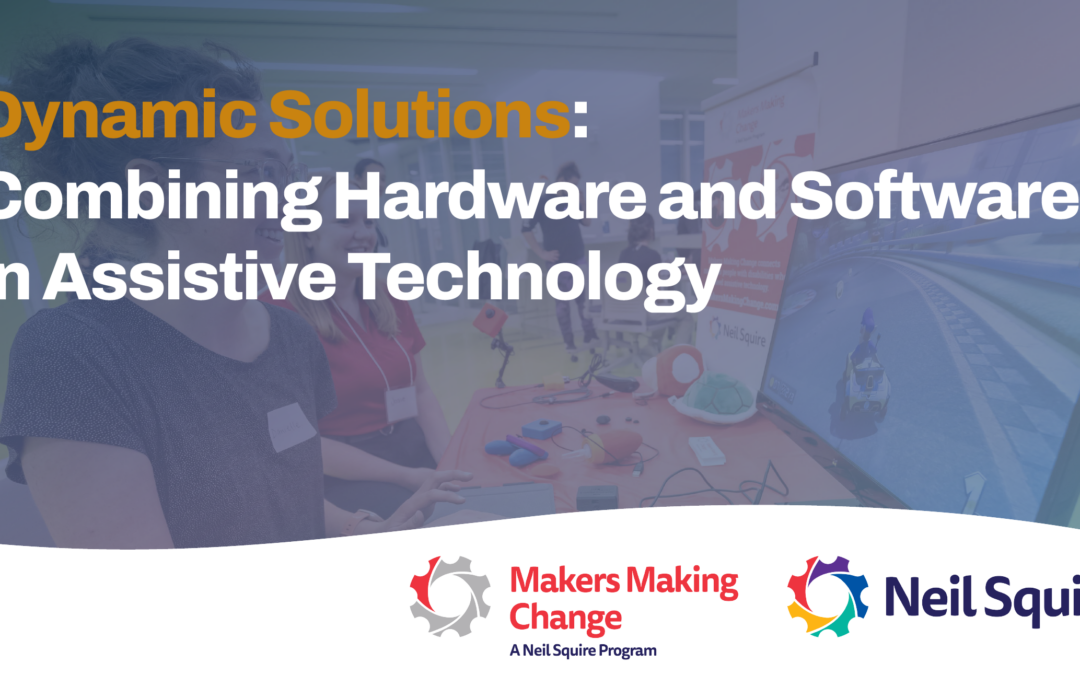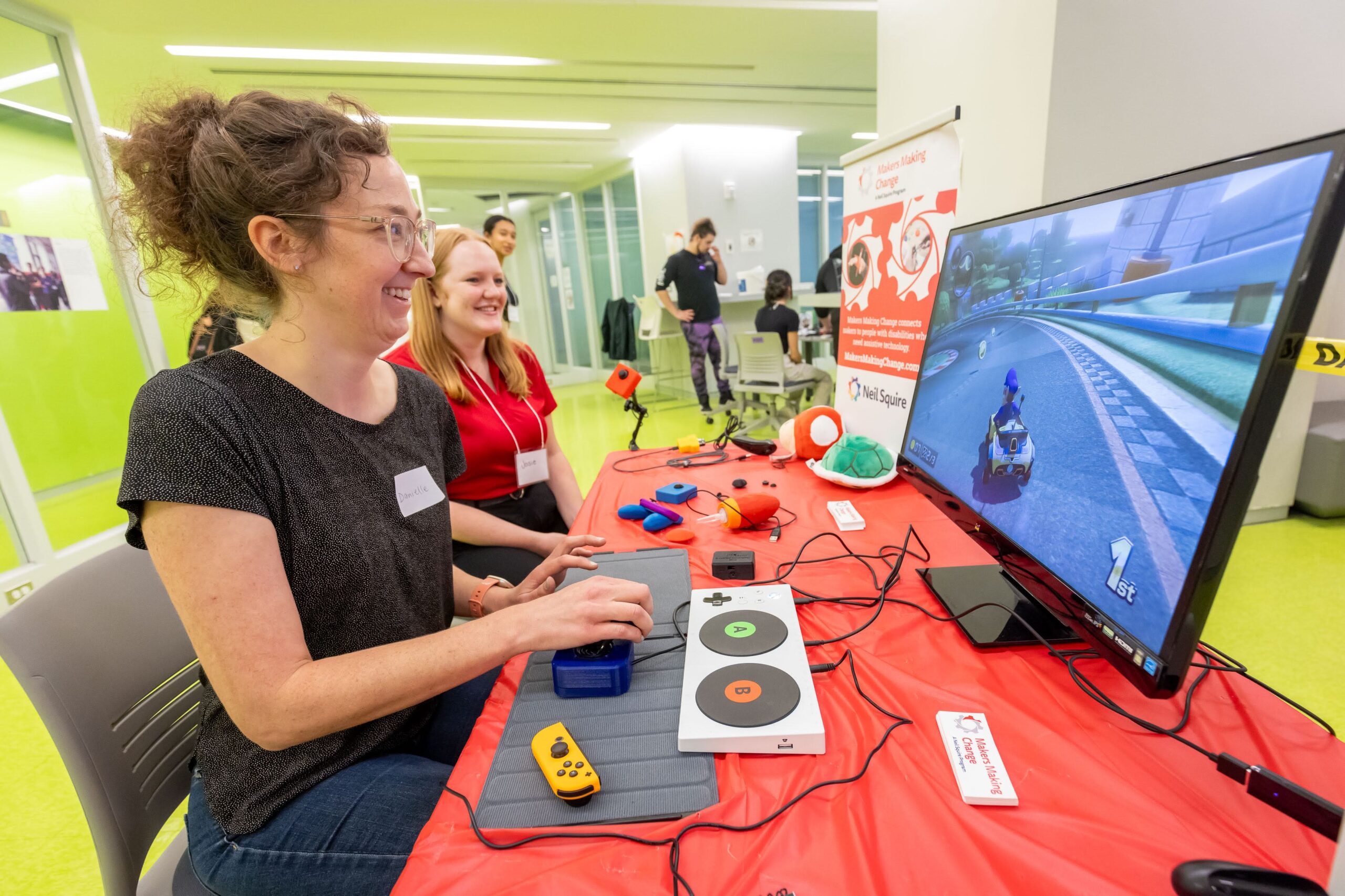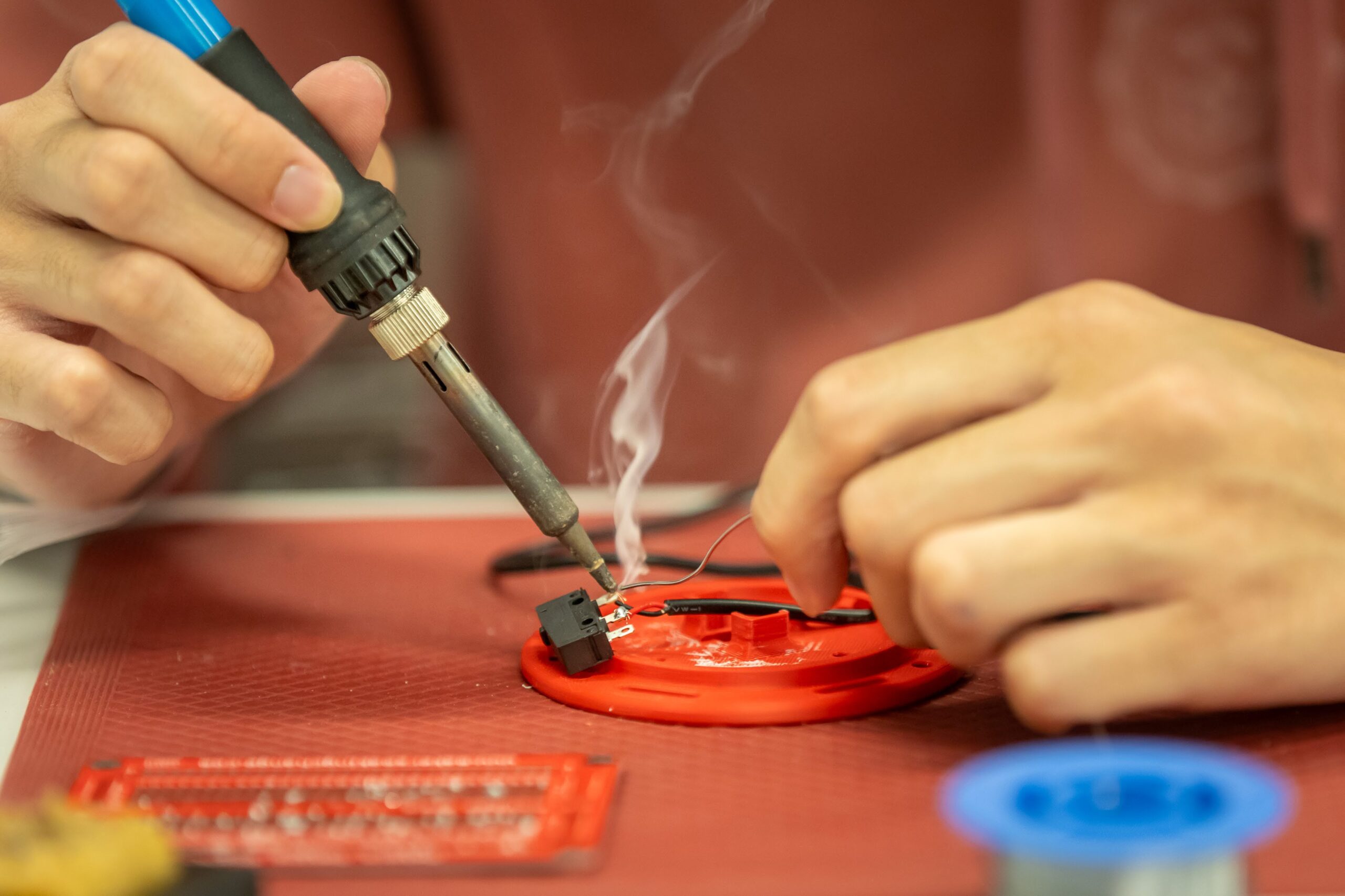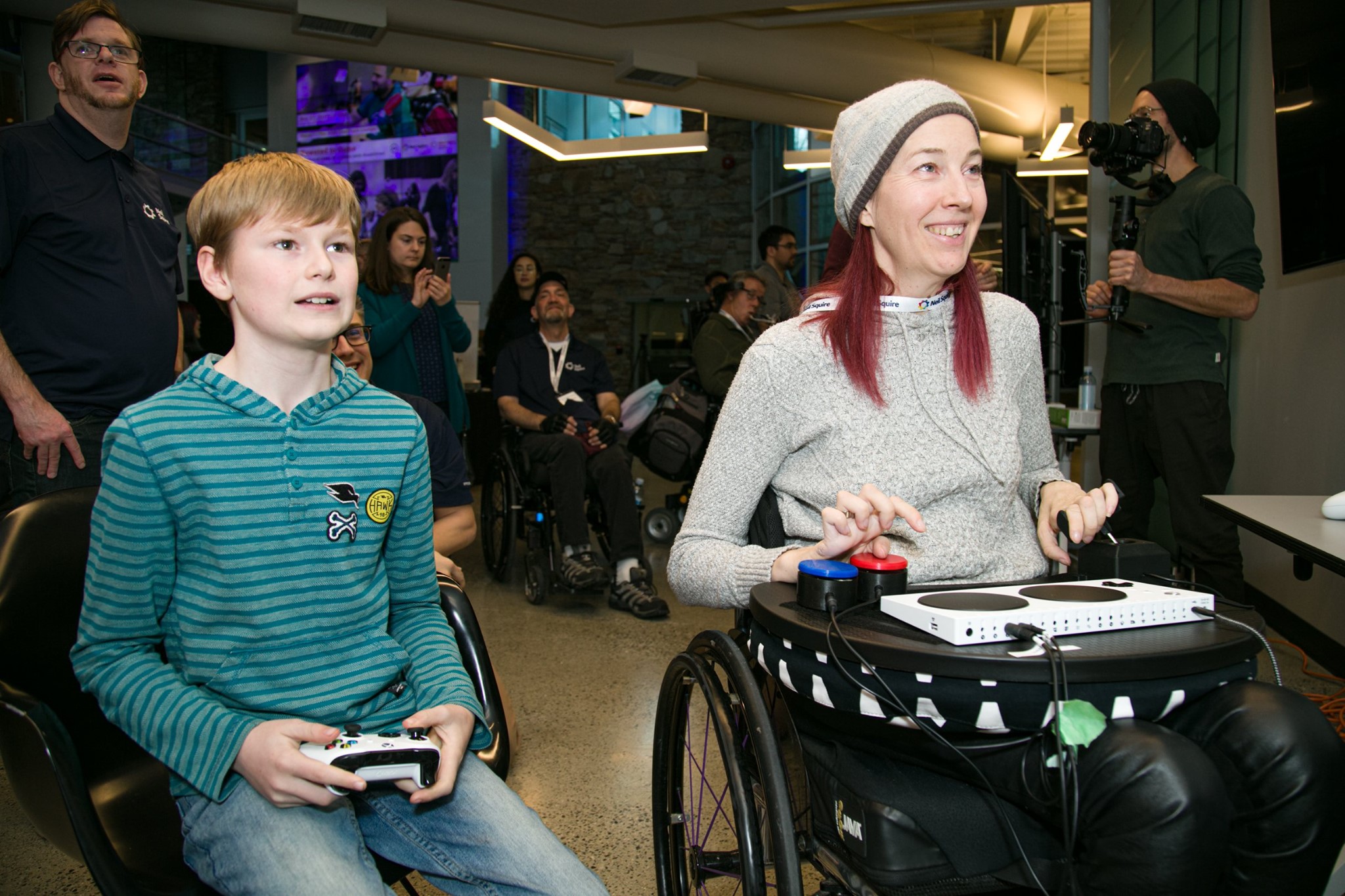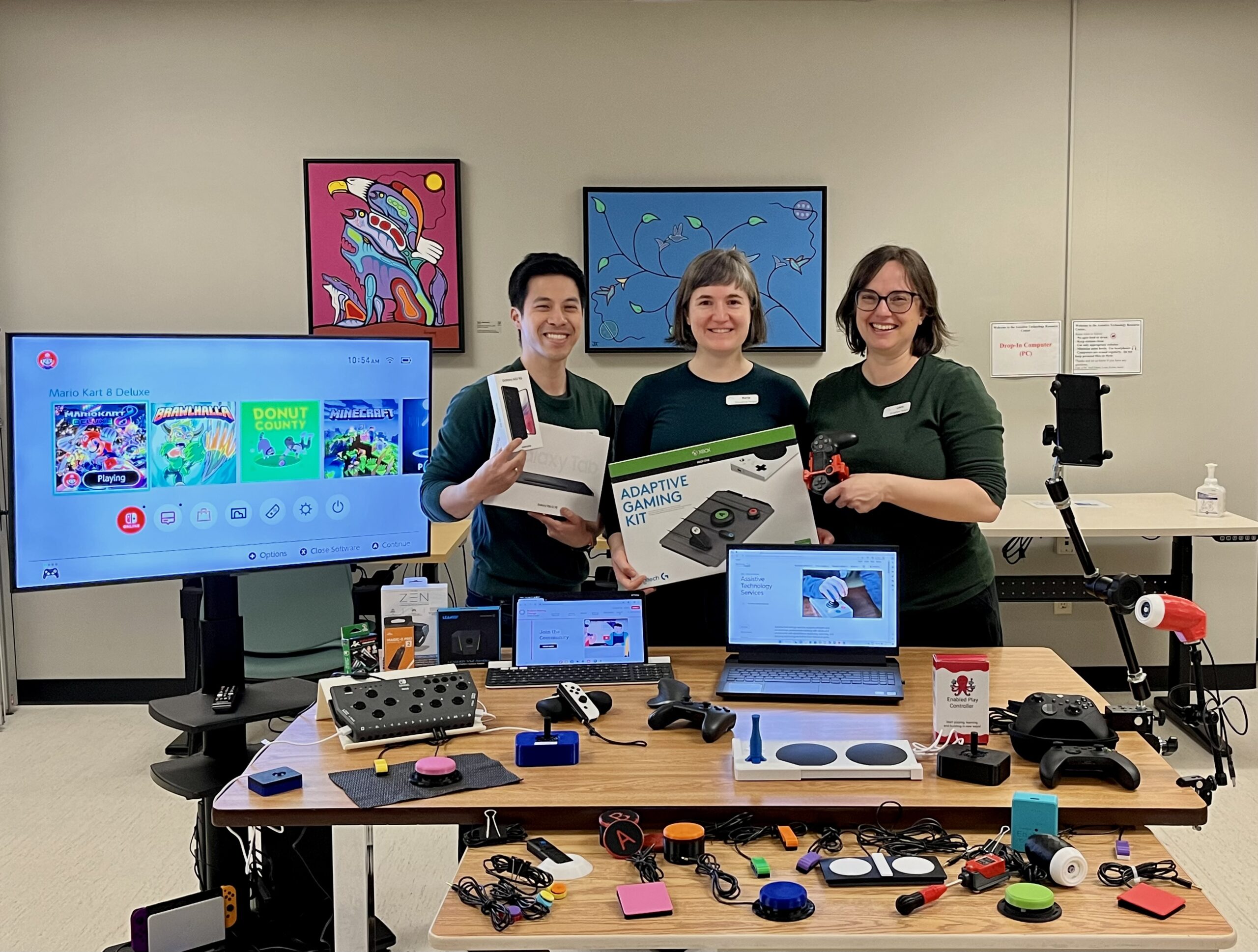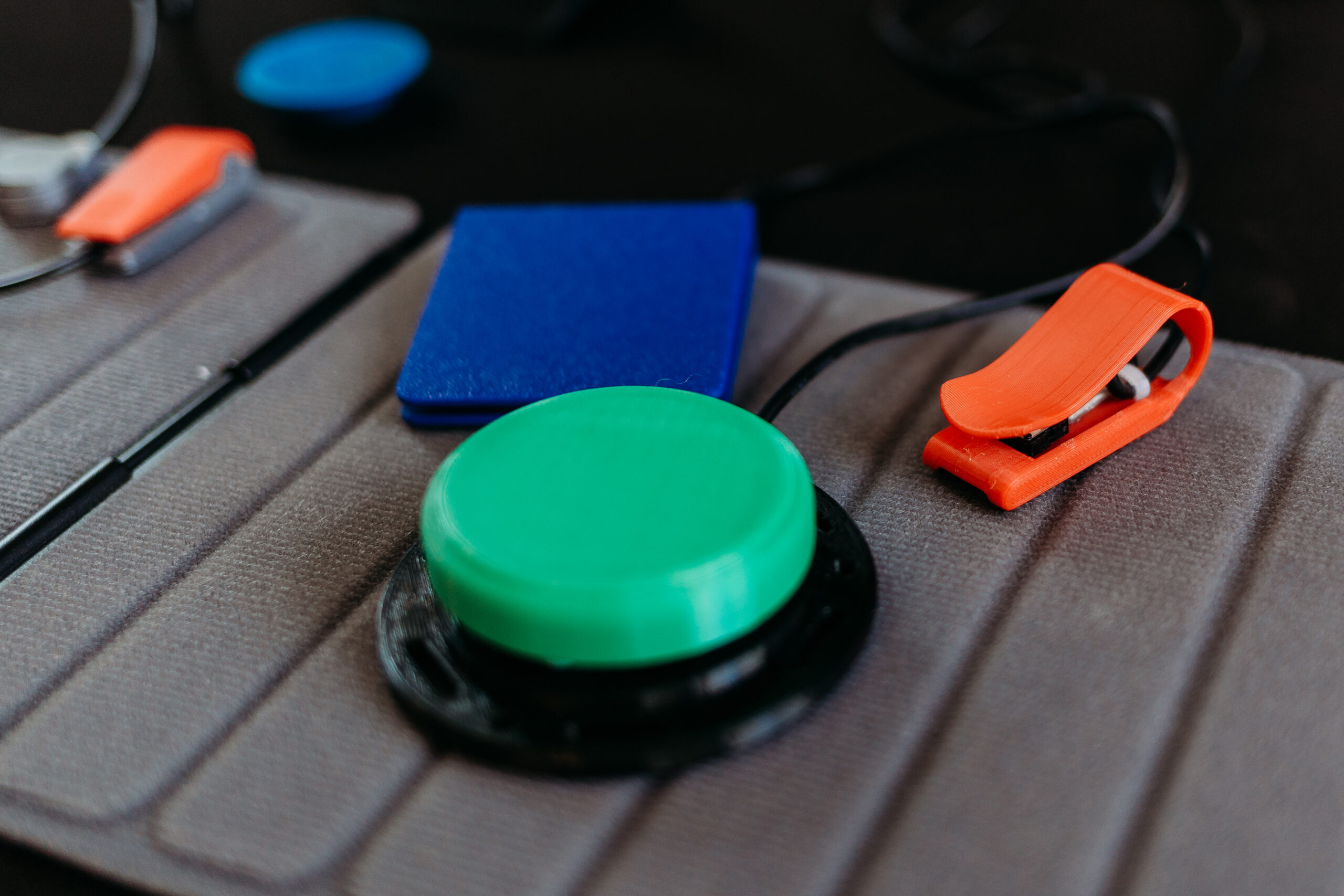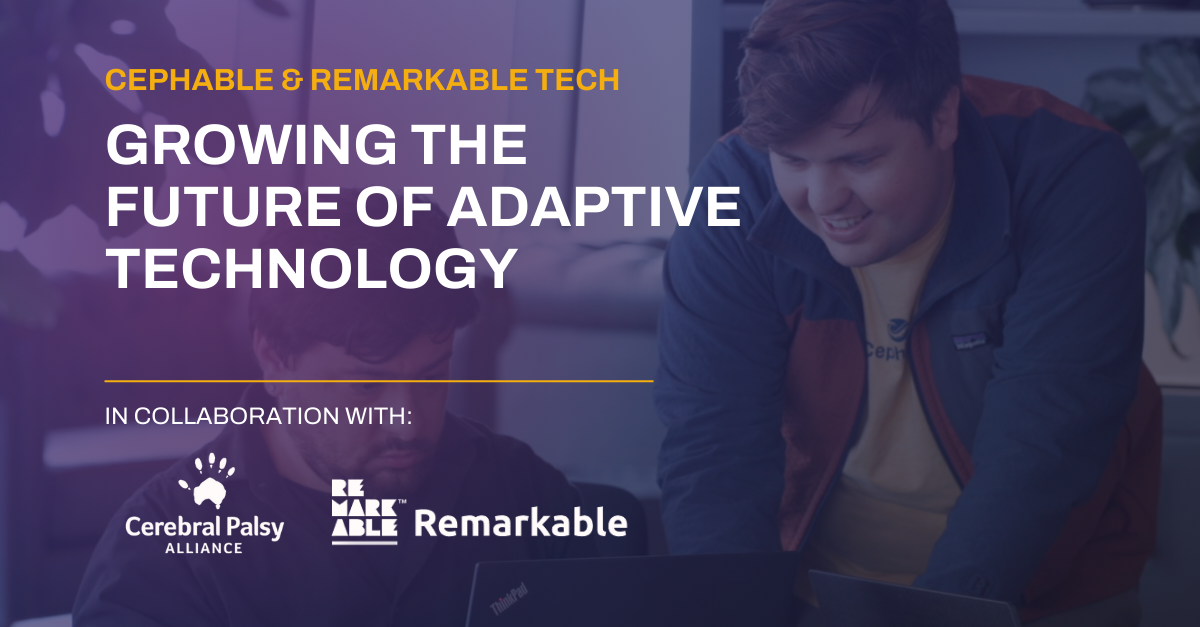The dynamic nature of human abilities calls for equally flexible technology for genuine and effective accessibility solutions. A single piece of technology isn’t the answer for everyone in all circumstances. This pushes us at Cephable to continue collaborating with organizations that share this mission and perspective. A key aspect of effective accessibility solutions is understanding the importance of seamless integration of hardware and software within an individual’s suite of assistive tools. Neil Squire’s Makers Making Change program stands out as an early champion we partnered with as their mission of low-cost open-source hardware pairs nicely with Cephable’s free-for-personal-use software. Not only do both organizations understand the need to lower the financial barriers for individuals, both Cephable & Makers Making Change have roots and a focus in the accessible gaming space.
In a recent Q&A, we sat down with Tyler Fentie, the Accessible Gaming Lead at Makers Making Change to reflect on the future of assistive technology and collaboration in accessibility and gaming.
What is Makers Making Change?
Makers Making Change is a program of Neil Squire. Neil Squire is a national nonprofit in Canada focused on empowering Canadians with Disabilities through the use of technology, knowledge, and passion. We have a variety of programs, but Makers Making Change focuses on hosting a library of low-cost open-source assistive technology. Persons with disabilities can request the assistive technology on our website and get connected with a volunteer maker. The volunteer maker then uses the provided step by step instructions and other documentation to build the device with any customizations the user needs. The user reimburses the volunteer maker for only the material cost of the device. This results in assistive technology (AT) like assistive switches costing less than $10 CAD instead of the $100+ cost commercially.
What’s your specific role at Makers Making Change?
As the Accessible Gaming Lead for Makers Making Change (MMC), my role is all about making gaming more inclusive for Canadians with disabilities. What got me into this was my own experience growing up with type one diabetes and relying on assistive technology and medical devices that often were made without users involved. That frustration pushed me to want to create better, more customizable solutions that actually work for the people using them. With the team, I work on expanding our accessible gaming program. This includes developing cool, low-cost gaming devices and establishing accessible gaming centers across Canada with our GAME Checkpoints initiative. My aim is simple—to make sure everyone has the chance to enjoy gaming in a way that works for them.
How do you describe Assistive Technology (AT) for gaming?
For people that cannot use a standard gaming controller or have difficulty with specific elements of the controller they can use various assistive technologies to create a customized setup. There are lots of different AT for gaming like alternative inputs (joysticks, switches, sip and puff, eye control, etc), controller modifications (adding 3D prints to your controller to make it fit your needs), and in game settings or software that you can find in games to make it more accessible.
How has gaming influenced your perspective on accessibility?
Gaming has always been a way for me to stay in touch with friends, especially those who live far away. It’s not just about playing—it’s about connection, and that’s made me realize how important gaming can be in people’s lives. It’s the biggest entertainment industry out there, and everyone should have the chance to be part of it. There are so many incredible stories in games, and they can have a big impact on people. That’s why making gaming accessible is so important to me—everyone deserves the chance to enjoy and experience it, no matter what. There are so many incredible stories in games, and they can have a big impact on people. That’s why making gaming accessible is so important to me—everyone deserves the chance to enjoy and experience it, no matter what.
How has the collaboration between Makers Making Change and Cephable enhanced the accessibility options available for your community?
The partnership between Makers Making Change and Cephable has been incredibly impactful for our community. Having a free personal option for digital access—whether for gaming or web use—using voice, facial expressions, or gestures has opened up new possibilities for people who would otherwise need expensive, complex setups.When we work with gamers, a key part of creating a custom setup is figuring out how many inputs we can incorporate. For those with limited access to switches or joysticks, alternative input methods are essential. Before this partnership, the high cost and accessibility barriers made it tough to recommend those options. Now, we can offer more affordable, effective solutions that meet our clients’ needs.
In a recent video, you mentioned that Cephable’s software “supercharged” the hardware from Makers Making Change. Can you explain why the flexibility of hardware & software working together is so important?
When creating a gaming setup, it’s often necessary to combine alternative inputs, controller modifications, and software—and that process involves a lot of trial and error. As new games are released, constant adjustments are needed. That’s why having a flexible setup with multiple input options in different styles is so important for long-term success.
There’s no “one-size-fits-all” solution for assistive technology in gaming, and there probably never will be. But having tools like Cephable’s software can really enhance what we do with our hardware, allowing people to access gaming in ways that might not be possible with just a custom controller. It gives players more options and adaptability, which is key for creating a setup that truly works for them.
Watch the video below:
What advice would you give to other companies looking to make their games or workplaces more accessible?
My advice would be to listen to users and accessibility experts—really embrace the “nothing about us without us” approach to inclusive design. Involving people with lived experience in the process is key. Also, remember that making something more accessible doesn’t just benefit a specific group; it improves the experience for everyone. Think of the “curb cut effect”—what starts as an accessibility feature can end up being helpful for all users. If nothing else, from a business perspective, accessibility can open up your product or workplace to a wider audience, which means more people engaging with or buying what you offer.
How do you see the future of assistive technology evolving in the next few years?
I think the way we interact with digital platforms is constantly changing, and that pace will only accelerate. Assistive technology will need to keep up with these advancements. For instance, I often get asked about VR/AR game accessibility, but right now, there are still significant barriers for gamers with motor disabilities—the headsets can be tough to use, and the platforms don’t integrate well with current assistive tech.I see a growing gap between assistive technology and these new platforms (similar to what we saw during the early popularity of computers), and it’s going to be crucial to address that gap early on. By learning from past challenges, we can work toward ensuring these emerging technologies are accessible right from the start.
What message would you like to share with those who might feel discouraged with their current assistive technology setup?
You are right in your frustration. If your assistive technology isn’t working for you, it’s not your fault—it’s the technology that needs improvement and that’s where your feedback comes in. Sharing your insight and the roadblocks you are experiencing are likely shared with others. There are solutions out there, and if you can’t find one that fits your needs, there are volunteers ready to help create something that works for you. There are so many great communities out there sharing their setups, what has worked for them, and giving insight to help create the next wave of AT to allow more people to play.
How can people get involved with or support the work of Makers Making Change?
Signing up at makersmakingchange.com will allow you access into the full open source assistive technology library. If you want to be a volunteer maker, after signing up you will be able to take on requests under the “Maker Wanted” tab. You can also host build events in your area, get connected with our community, and more as a chapter lead. If you are looking for assistive technology, you will be able to request devices via the library and submit your ideas under the “Design Challenges” section.
Closing Thoughts
As Tyler emphasized, there is no “one-size-fits-all” solution in assistive technology. This reality is particularly important as we see new innovations emerge, often without accessibility being a primary consideration from the start. It’s crucial that we continue to focus on collaboration across hardware and software to develop technology that is flexible, adaptable, and affordable to meet the evolving needs of all users. The future is collaborative!
About Neil Squire
“We use Technology, Knowledge, and Passion to Empower Canadians with Disabilities.” Neil Squire, the Canadian leader in assistive technology, has been revolutionizing the lives of Canadians with disabilities since 1984. Our work is focused on four distinct areas: Innovation, Digital Literacy, Employment, and Assistive Technology. Our work enables people with disabilities to achieve their goals, reach their full potential, and continue living life to the fullest.
About Makers Making Change
Makers Making Change, an initiative launched by Neil Squire in 2016, leverages the capacity of community based Makers, Occupational Therapists and Volunteers to develop and deliver affordable Open Source Assistive Technologies.
Submit a Partnership Request
We are thrilled that you discovered us! Please complete this form and a Cephable team member will contact you. We look forward to collaborating with you!

